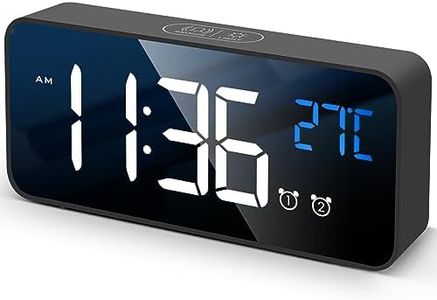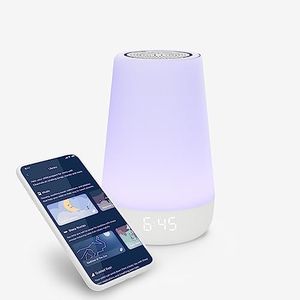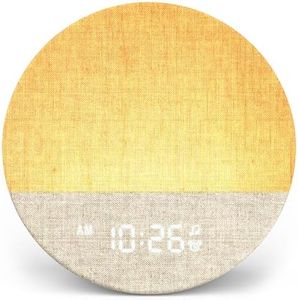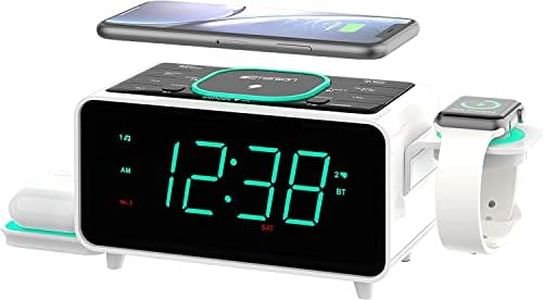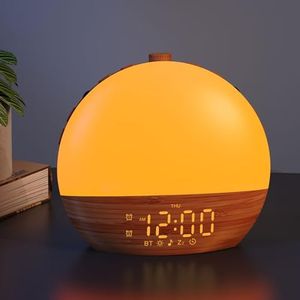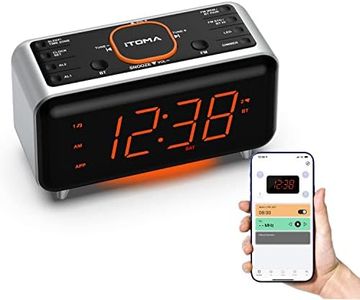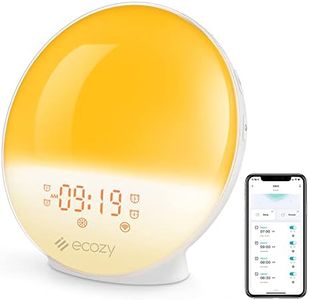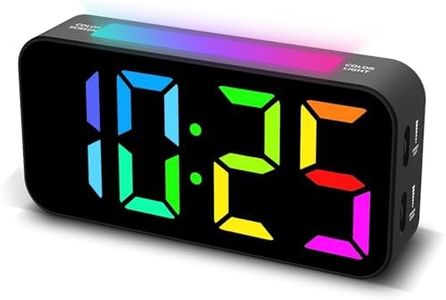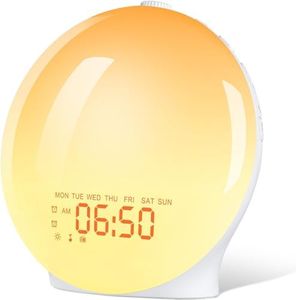We Use CookiesWe use cookies to enhance the security, performance,
functionality and for analytical and promotional activities. By continuing to browse this site you
are agreeing to our privacy policy
10 Best Self Setting Alarm Clock
From leading brands and best sellers available on the web.Buying Guide for the Best Self Setting Alarm Clock
Choosing a self-setting alarm clock can make your mornings much smoother since these clocks automatically set themselves to the correct time using signals like radio waves or the internet. When shopping for one, it’s important to understand which features actually matter for your daily use, so that you end up with an alarm clock that truly fits your lifestyle.Time Synchronization MethodThis refers to how the clock sets its time automatically. Most commonly, self-setting alarm clocks use either a radio signal from an atomic clock or connect to the internet to always display the accurate time. Radio-controlled clocks receive signals from places like government timekeeping stations, while internet-connected ones get time updates via Wi-Fi. Clocks relying on radio signals work well in most regions but may face trouble if the signal is weak indoors or not available in your country. Internet-synced clocks offer more consistency but require a Wi-Fi connection. When deciding, think about where you’ll use the clock and whether you have easy access to Wi-Fi or strong radio signals.
Display TypeThe display type is about how the time and alarm information appear visually. Common types are LED, LCD, and analog displays. LED displays are bright and easy to see even in the dark, but may be too bright for light-sensitive sleepers. LCDs often have adjustable backlighting for comfort. Analog displays are more classic and quiet but lack some of the advanced features. If you prefer large, clear numbers or need something visible at night, go with LED or backlit LCD. For a more traditional look or a silent bedside, try an analog.
Alarm Sound and Volume ControlThis spec describes what kind of alarm noise the clock makes and whether you can adjust how loud it is. Some clocks offer simple beeps while others let you wake up with radio, soothing chimes, or even nature sounds. Volume control lets you pick how gentle or strong the alarm is, which is helpful whether you’re a heavy sleeper needing a loud ring or a light sleeper wanting a softer tone. Think about how difficult it is for you to wake up, and whether you’re sensitive to certain sounds, to choose the right option here.
Multiple Alarms and Snooze FunctionMultiple alarms allow you to set several wake-up times, which is great if your schedule varies during the week or if multiple people share the clock. The snooze function determines how long you can delay the alarm after it rings. Some models let you adjust snooze interval and number of times you can snooze. If your routine is complicated or you tend to oversleep, pay attention to the flexibility and customization of these features.
Power Source and Battery BackupPower source tells you whether the clock runs on wall electricity, batteries, or both. Battery backup is important in case of a power outage – it keeps the clock running and your alarms set. Clocks that have both plug-in and battery options give you peace of mind and portability. If you live in a place with frequent outages or want to move the clock around, look for robust battery support.
Ease of Use and ControlsEase of use covers how simple the buttons and interface are for setting alarms, changing the time, or making adjustments. Some clocks have large, clearly labeled buttons and intuitive menus, while others may be more complex or less user-friendly. For stress-free use, consider how comfortable you are with technology and pick a clock that matches your preference for simplicity or additional features.
Extra FeaturesSome self-setting alarm clocks come with additional features like USB charging ports, night lights, projection of time onto a wall, or even temperature displays. These can add convenience or comfort, but aren’t necessary for everyone. Decide which extras will truly fit into your daily routine, such as a reading light if you read in bed or a charging port for your devices.


